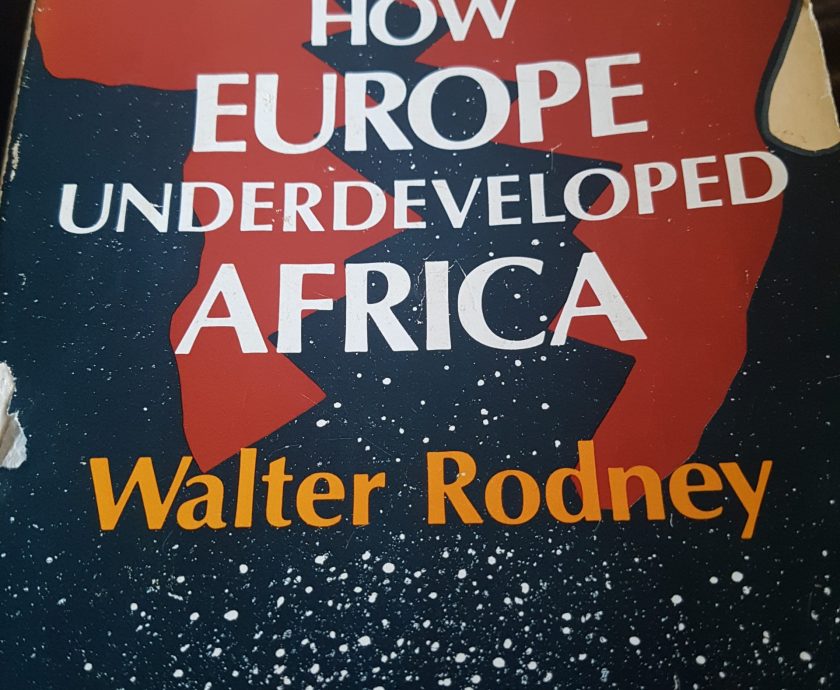NetworkingOur StoriesResearch
Humanitarian Crisis: Translated to Networking for the Marginalised
The humanitarian sector, mainly encompasses diverse actors dedicated to the upliftment and elevation of societies and individuals in vulnerable circumstances, including responding to crisis (Stephenson 2005) To deal with the many crises that threaten the wellbeing and survival of the population, including the workers, the humanitarian community has adopted a number of strategies, most of which promote networks as means of resilience (Lai et al 2019).
Resilience has a strong relationship with wellbeing as it talks to one’s ability to bounce back or resist being deformed or damaged by trauma (Harms et al 2018, Lai et al 2019). Humanitarian agencies consist of a diverse set of players, some of which are directly affected by the crisis or social ills that the humanitarian efforts aim to address (Redfield 2006). These crisis-affected humanitarian workers tend to play a significant role in bridging the gap between the international agents and the communities on the ground, although there is some displeasure around the accommodation of their needs by humanitarian agencies, especially with regards to wellbeing (Abramowitz 2014, Barbelet 2018).
“Humanitarian organisations often have difficulty understanding what local populations perceive to be critical health and social issues, and addressing them in a meaningful and timely way. They place too little value on local populations’ own estimations of risk and vulnerability”…“Expatriates poorly understood the meaning of aid, protection, need, deservedness, duration, reliability and self-help”…Others criticized NGOs for failing to include or recognise legitimated non-Western forms of healing” (Abramowitz 2014: 11).
Local humanitarians tend to be overlooked in most contexts, which permeates unequal compensation, risky living and working conditions as well as pressure to emigrate or disassociate from the initiatives. This creates tensions between the local and the privileged or international humanitarian agencies, moreover because they are not perceived as “crucial sources of knowledge about local contexts, norms, morals, values, and needs, local staff are turned into tactical service delivery personnel fulfilling agendas set elsewhere” (Abramowitz 2014:12) This is one of the reasons that propelled the humanitarians to seek different ways of engaging different actors to build resilience, which includes the formation of networks.
The creation of networks has become one of the most prominent ways of fostering relationships to coordinate and collaborate within the humanitarian sector (Stephenson 2005, Qukulu 2020, Swingler 2020). It’s important however, to mention that due to the volatile nature of the humanitarian environment, the creation of networks has seen its fair share of challenges, as they tend to require some element of coordination to ensure coherence in the services provided (Stephenson 2005). The challenges include (1) lack of coordination, as there is often no central figure that determines the direction of the network, (2) the diverse number of members, each with their own agenda, that tends to serve self or organisational interests, (3) huge staff turnover, making it challenging to build trust in relationships, (4) Misinformation or limited communication regarding the crisis or issue, leading to confusion and division, (5) Competition to be the first on the field to garner funds and publicity, (6) Inadequate responses that lead to mistakes due to time and constraints (Stephenson 2005, Abramowitz et al 2014, Lai et al 2019). These challenges are a reflection of the insecure and dynamic nature of the humanitarian sector, and they translate to other aspects of it, such as network formations. The idea of networks has been explored widely by various researcher as representing the connections between individuals, coming together to foster an agenda, with the belief that without such interactions, their objectives would be highly challenging to achieve (Mitchell 1974, Wolfe 1978, Hammer 1964, Hammer 1981, Knox et al 2006, Stephenson 2005). Network establishment tends to occur between actors that share the same type of traits, either in terms of the areas of focus, status, geographical location, structural aspects (same funders) or institutional backgrounds (founding dates), the individuals are often connected to each other in some way prior to joining the network (Dutta and Jackson 2001, Chernobrov 2018, Lai et al 2019).
Within the humanitarian sector, networks encompass diverse formations including community groups, sector clusters, professional networks and coalitions of different actors driven by the same humanitarian agenda, targeting most specifically marginalised and vulnerable communities (Swingler 2020). There are new networks who emerged as a response to crisis, and those that have been in existence for years prior to crisis, but adopt to attend to the issues brought about by particular crisis (Stephenson 2006) For example, the community action networks in South Africa are amongst those who emerged as a response to the Covid 19 crisis (Qukula 2020).
Organising individuals into groups and networks tends to determine the outcomes of various social inteventions (Dutta and Jackson 2001). Networks, much like the research focusing on it, have transitional traits that depend mostly on context, conditions, objectives and membership (Wolfe 1978, Stephenson 2005). “Networks [are] a set of links, … generated structures and [flowing] processes” (Wolfe 1978; 53). Networks have been characterised as being blurred in boundaries, existing in complex environments, multiplex and multifaceted with different relationships that influence each other, they are also dynamic and their outcomes tend to happen in organisational and network level (Lai et al 2019). Therefore, networks are interpersonal bonds casually connected, cutting across institutions and individuals (Mitchell 1974).
There are different types of networks varying from community, social networks, to online, bureaucracy, business and humanitarian networks (Nonnecke et al 2006, Bartholomew and Mason 2019, Lai et al 2019). Online networks have been becoming increasingly popular with the rise of technology making it easier for individuals to connect and collaborate, especially in times of crisis, much like the Covid-19 that forces social distancing and restricted social interactions. These online networks are predominantly used by humanitarian networks to disseminate timely and relevant information to assist organisations to better strategies in their response to the crisis (Chernobrov 2018). Affected communities are also able to form their own online networks or join other networks and participate in the process of identifying their needs and voice out constraints. (Panzarasa et al 2009). Maloney-Krichmar and Preece (2005) indicate that those without a strong support structure in the real world tend to turn to and benefit from online support networks.
Contrary to online networks, the increased use of technology highlights the digital divide between the privileged and the vulnerable members which tend to create environments that are exclusive, and fosters top-down approaches, even within the digital online networks (Chernobrov 2018). These online networks tend to revolve around organisations that are already well-known, while leaving the smaller organisations and vulnerable members in the periphery. Nonnecke et al (2006) clarify this by making a distinction between members of online networks, whereby the ones that do not post or comment are called lurkers, and predominantly observers who are less optimistic and positive as opposed to those who post. This leads to lack of representation, especially of the voices that are most affected and vulnerable (Chernobrov 2018).
These dynamics could have deeper implications in the humanitarian networks, considering their main objective of building resilience and building coherence. If the members of the networks who are themselves affected by the crisis find themselves marginalised in these online networks, how are they able to build resilience and further the humanitarian agenda of uplifting their communities?
Resilience has a strong relationship with wellbeing as it talks to one’s ability to bounce back or resist being deformed or damaged by trauma (Harms et al 2018, Lai et al 2019). Humanitarian agencies consist of a diverse set of players, some of which are directly affected by the crisis or social ills that the humanitarian efforts aim to address (Redfield 2006). These crisis-affected humanitarian workers tend to play a significant role in bridging the gap between the international agents and the communities on the ground, although there is some displeasure around the accommodation of their needs by humanitarian agencies, especially with regards to wellbeing (Abramowitz 2014, Barbelet 2018).
“Humanitarian organisations often have difficulty understanding what local populations perceive to be critical health and social issues, and addressing them in a meaningful and timely way. They place too little value on local populations’ own estimations of risk and vulnerability”…“Expatriates poorly understood the meaning of aid, protection, need, deservedness, duration, reliability and self-help”…Others criticized NGOs for failing to include or recognise legitimated non-Western forms of healing” (Abramowitz 2014: 11).
Local humanitarians tend to be overlooked in most contexts, which permeates unequal compensation, risky living and working conditions as well as pressure to emigrate or disassociate from the initiatives. This creates tensions between the local and the privileged or international humanitarian agencies, moreover because they are not perceived as “crucial sources of knowledge about local contexts, norms, morals, values, and needs, local staff are turned into tactical service delivery personnel fulfilling agendas set elsewhere” (Abramowitz 2014:12) This is one of the reasons that propelled the humanitarians to seek different ways of engaging different actors to build resilience, which includes the formation of networks.
The creation of networks has become one of the most prominent ways of fostering relationships to coordinate and collaborate within the humanitarian sector (Stephenson 2005, Qukulu 2020, Swingler 2020). It’s important however, to mention that due to the volatile nature of the humanitarian environment, the creation of networks has seen its fair share of challenges, as they tend to require some element of coordination to ensure coherence in the services provided (Stephenson 2005). The challenges include (1) lack of coordination, as there is often no central figure that determines the direction of the network, (2) the diverse number of members, each with their own agenda, that tends to serve self or organisational interests, (3) huge staff turnover, making it challenging to build trust in relationships, (4) Misinformation or limited communication regarding the crisis or issue, leading to confusion and division, (5) Competition to be the first on the field to garner funds and publicity, (6) Inadequate responses that lead to mistakes due to time and constraints (Stephenson 2005, Abramowitz et al 2014, Lai et al 2019). These challenges are a reflection of the insecure and dynamic nature of the humanitarian sector, and they translate to other aspects of it, such as network formations. The idea of networks has been explored widely by various researcher as representing the connections between individuals, coming together to foster an agenda, with the belief that without such interactions, their objectives would be highly challenging to achieve (Mitchell 1974, Wolfe 1978, Hammer 1964, Hammer 1981, Knox et al 2006, Stephenson 2005). Network establishment tends to occur between actors that share the same type of traits, either in terms of the areas of focus, status, geographical location, structural aspects (same funders) or institutional backgrounds (founding dates), the individuals are often connected to each other in some way prior to joining the network (Dutta and Jackson 2001, Chernobrov 2018, Lai et al 2019).
Within the humanitarian sector, networks encompass diverse formations including community groups, sector clusters, professional networks and coalitions of different actors driven by the same humanitarian agenda, targeting most specifically marginalised and vulnerable communities (Swingler 2020). There are new networks who emerged as a response to crisis, and those that have been in existence for years prior to crisis, but adopt to attend to the issues brought about by particular crisis (Stephenson 2006) For example, the community action networks in South Africa are amongst those who emerged as a response to the Covid 19 crisis (Qukula 2020).
Organising individuals into groups and networks tends to determine the outcomes of various social inteventions (Dutta and Jackson 2001). Networks, much like the research focusing on it, have transitional traits that depend mostly on context, conditions, objectives and membership (Wolfe 1978, Stephenson 2005). “Networks [are] a set of links, … generated structures and [flowing] processes” (Wolfe 1978; 53). Networks have been characterised as being blurred in boundaries, existing in complex environments, multiplex and multifaceted with different relationships that influence each other, they are also dynamic and their outcomes tend to happen in organisational and network level (Lai et al 2019). Therefore, networks are interpersonal bonds casually connected, cutting across institutions and individuals (Mitchell 1974).
There are different types of networks varying from community, social networks, to online, bureaucracy, business and humanitarian networks (Nonnecke et al 2006, Bartholomew and Mason 2019, Lai et al 2019). Online networks have been becoming increasingly popular with the rise of technology making it easier for individuals to connect and collaborate, especially in times of crisis, much like the Covid-19 that forces social distancing and restricted social interactions. These online networks are predominantly used by humanitarian networks to disseminate timely and relevant information to assist organisations to better strategies in their response to the crisis (Chernobrov 2018). Affected communities are also able to form their own online networks or join other networks and participate in the process of identifying their needs and voice out constraints. (Panzarasa et al 2009). Maloney-Krichmar and Preece (2005) indicate that those without a strong support structure in the real world tend to turn to and benefit from online support networks.
Contrary to online networks, the increased use of technology highlights the digital divide between the privileged and the vulnerable members which tend to create environments that are exclusive, and fosters top-down approaches, even within the digital online networks (Chernobrov 2018). These online networks tend to revolve around organisations that are already well-known, while leaving the smaller organisations and vulnerable members in the periphery. Nonnecke et al (2006) clarify this by making a distinction between members of online networks, whereby the ones that do not post or comment are called lurkers, and predominantly observers who are less optimistic and positive as opposed to those who post. This leads to lack of representation, especially of the voices that are most affected and vulnerable (Chernobrov 2018).
These dynamics could have deeper implications in the humanitarian networks, considering their main objective of building resilience and building coherence. If the members of the networks who are themselves affected by the crisis find themselves marginalised in these online networks, how are they able to build resilience and further the humanitarian agenda of uplifting their communities?




